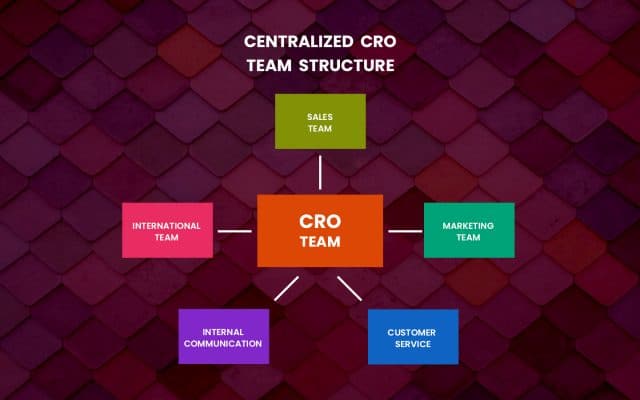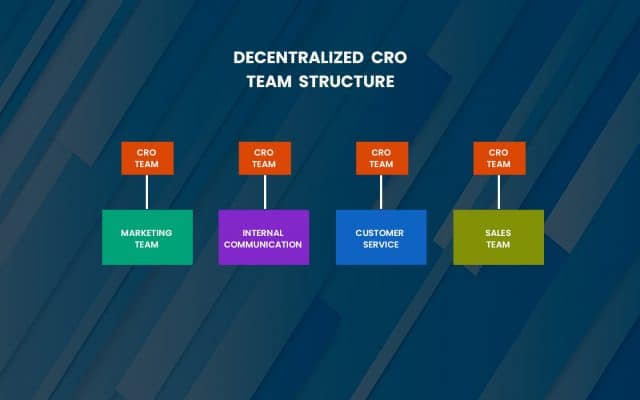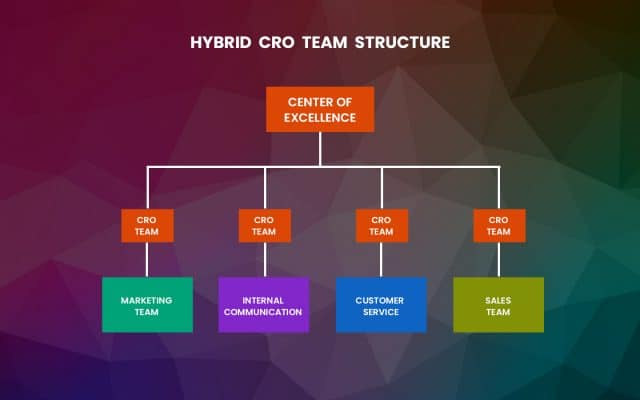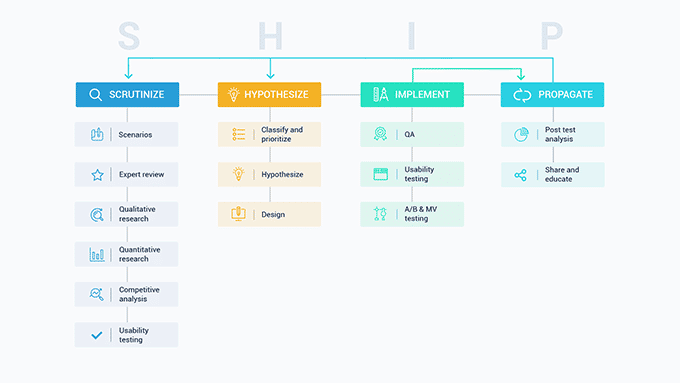Disclaimer: This section is a TL;DR of the main article and it’s for you if you’re not interested in reading the whole article. On the other hand, if you want to read the full blog, just scroll down and you’ll see the introduction.
- The value that Conversion Rate Optimization (CRO) brings to the table is now indisputable. Although we still see top executives who are skeptical of its value, the CRO concept has proved its worth to the mainstream.
- There are different components that make up a good CRO program, and they’re listed below.
- CRO Tools: As with every trade, conversion optimizers require tools to perform their optimization work. Understanding how to use the tools is more important, as it might also determine your CRO program’s success. When it comes to CRO tools, where do you start, and how do you smartly use them? The best way of going about it is to segregate the tools into three categories: Web Analytics, User Behavior tools, and AB testing platforms.
- The team makeup: It goes without saying that a dedicated CRO team is a crucial lever for a successful CRO program. This means that the way you build and structure your team is as important as the CRO program itself. There are 3 team structures to choose from; the centralized structure, the decentralized structure, and the hybrid structure.
- The CRO budget: An effective CRO program requires an investment of money. The good news is that conversion optimization is all about dollars and cents — this means that you’re bound to see its positive impact on your bottom line if experts execute the program. Under CRO budget, it’s important to look at human capital, duration of the project, cost of A/B testing tools, etc.
- The methodology: How you do conversion optimization matters. A successful CRO program requires a well-defined process. This is key. Without a well-defined process, a CRO program can lack direction. Having a CRO methodology to follow, you’d know which issues to focus on first and which ones you should ignore. In other words, following a CRO process will serve you time and resources.
- Setting the right expectations: Setting the right and transparent expectations before diving into the CRO project is imperative. As a service-based company that offers website conversion optimization services, we have learned over the years that expectations are either the road to bliss or damnation.
- Good project management: Project management is that piece of the puzzle many CEOs relegate to the backseat of a conversion program. But its importance in a CRO program can’t be overstated. Better CRO project management = better CRO programs. When project management is done right, it helps the CRO program run more smoothly.
Here’s A Longer And More Detailed Version Of The Article.
The value that Conversion Rate Optimization (CRO) brings to the table is now indisputable. Although we still come across top executives who are still skeptical of its value, the CRO concept has proved its worth to the mainstream.
However, most organizations’ implementation of a CRO program is still not optimal, which could be why some managers are still skeptical.
While the outcomes associated with a good CRO program are obvious, ranging from improved conversions to high retention rates, the suboptimal optimization program’s consequences are frequently overlooked. And they can hurt your business where it matters the most – ROI.
So, when can you be sure that you can execute a successful CRO program?
Well, pay attention to the following components, and you will get there:
1. The CRO tools
As with every trade, conversion optimizers require tools to perform their optimization work. Understanding how to use the tools is more important, as it might also determine your CRO program’s success.
CRO tools collect data about your website and its visitors to help you understand how people use your site and identify and test potential changes to increase conversion rates. Any conversion optimizer knows that the right tools for the program are critical in obtaining desired results in a timely manner.
CRO tools help you:
- Understand why visitors aren’t converting into leads or customers
- Identify possible changes to make to your website to increase conversions
- Test changes you make to your site for the highest conversion rates
Here at Invesp, we use several tools for CRO programs, and we understand that no one tool is better than another – every CRO tool serves a different purpose.
So, when it comes to CRO tools, where do you start, and how do you smartly use them?
The best way of going about it is to segregate the tools into three categories:
Web Analytics: Help you diagnose the problems on your website
Without web analytics, you wouldn’t know what’s happening on your site. And when you don’t know what’s going on on your site there’s no way you will know how to improve your website.
Web analytics tools are a crucial part of your CRO program because they provide you with numerical, quantitative data about your website and its visitors, giving you insight into vital metrics such as:
- Sessions
- Session duration
- Pages with high exit rates
- Bounce rate
Knowing about these metrics can in turn help you find answers to questions like:
Which page or area on the website is causing visitors to exit?
What path are visitors taking on my website?
How long are visitors sticking around on the website?
Which device or browsers are my visitors using to access my website?
How many visitors are leaving my site without converting?
For instance, if visitors are arriving at your landing page but are not buying, downloading, or subscribing, web analytics tools can show you what your visitors do when they visit your site and this can help you identify conversion bottlenecks that are causing them not to convert.
I talked to Khalid about the different analytics tools, and he suggested that:
“Most companies we work with already have Google Analytics installed on their site. The challenge is that GA out of the box does not give you all the information you need to improve conversions. It merely reports page metrics. When you are to increase conversions, you have to look at the whole customer journey on your site. Because of that, you have to do further set up in Google analytics. If you are an ecommerce site, having enhanced ecommerce and making sure that it is configured correctly is a must. In addition, you have to configure two things: 1. events for different actions on the site, and 2. Different goals and funnels to track how visitors navigate around the site.“
You can read more about using google analytics to improve conversions.
Speaking of web analytics, here are some of the common platforms we use on projects the most popular ones are:
If you’re not interested in any of the above web analytics tools, we have compiled a list of other tools you may like. Read about them here.
User Behavior tools: Understand the behavior of your site visitors
If you don’t understand why visitors behave in a certain way on your site, how are you going to provide them what they really need? This is what makes the behavior analytics tools more important in conversion optimization.
User behavior tools are mainly used during the qualitative research process to gather data on how visitors interact with your website and why they behave the way they do. As you can tell, this tool belt can ultimately drive your CRO program and your decision-making.
Using behavior analytics tools, you can answer questions like:
Why are potential customers not adding items to their shopping carts?
Why are they leaving the website without completing a purchase?
Are visitors finding what they are looking for on my site?
Why are visitors not scrolling to the bottom of the page?
For instance, you may be able to see the devices and browsers that visitors use to access your site, but that won’t help you optimize your site if you don’t know the reason why they are leaving your site without making a purchase.
For behavior analytics tools, here at Invesp, our CRO team relies on our own CRO platform, FigPii. It’s very convenient and it helps us avoid the problems that come with using multiple tools such as slowing websites’ speed and mismatches in data. This platform is sprinkled with tools like:
Some of the other popular tools that you can take a look at include:
There is an issue that you have to close attention to. Some of these tools increase page load times. So, don’t run all the time on your site.
CRO testing tools: compare and measure changes on your website
Once you know the what and the why on your website, you’d want to make some changes to your website to make it perform better, right? But how will you know if the changes you made are working for or against you? How will you measure the effectiveness of the changes you made on your website?
Enter CRO testing tools.
Testing tools can help you compare and measure the effectiveness of changes to see which variations perform better in terms of conversions.
But in order to launch A/B tests or split tests on your site, your website has to have a certain number of visitors and conversions per month. According to Khalid:
“When you’re only getting 100, 200, or 300 visitors per week, it’s difficult for conversion optimizers to really figure out intent. You probably should get more traffic. You are better off focusing on SEO or PPC and bring more visitors to the site. At least drive significant traffic like 10,000 or 20,000 visitors in order for us to figure conversion problems on your site.”
So, does this mean that if you have little traffic on your site you can’t do conversion optimization? Not really, CRO can be done on any site. You might not be able to run A/B tests, but you can still optimize.
In fact, when A/B testing is off the table, you still have alternatives:
User testing or usability testing. This type of testing is ideal for verifying optimization changes. The only pitfall to making changes based on user testing insights (and when your website has low traffic) is that it can take a couple of months before you see the results.
Tree testing and card sorting. This type of testing is suitable for optimizing navigation, but it can be very complicated. This is because navigation is one of the most difficult website elements to optimize and test. And the testing doesn’t include front-end tweaks that affect elements on the interface, but they include back-end as well as site architecture changes.
You can rely on the following CRO testing tools:
- FigPii (A/B testing)
- User testing (User/usability testing)
- Optimal Workshop (Tree testing and card sorting)
- Google optimize (AB testing)
- VWO (AB testing)
2. The team make up
It goes without saying that a dedicated CRO team is a crucial lever for a successful CRO program. This means that the way you build and structure your team is as important as the CRO program itself.
Having said that, so how does one go about structuring a CRO team?
Well, there are three team structures to choose from:
- A centralized structure
- A decentralized structure
- A hybrid structure
From the above-mentioned structures, the one that you have to go with has to be determined by the characteristics of your organization. To make you understand, let’s breakdown the three CRO team structures one-by-one:
Centralized CRO team
This is probably the most common type of CRO team structure out there.

As you can see from the diagram above, a centralized CRO team model has all the knowledge concentrated in the same place. This means that this method allows the CRO team to be aware of the performance of the entire site and business, and it paves way for a strategic approach to optimization that includes the entire funnel.
Decentralized CRO team structure
Unlike the centralized model, optimization knowledge in the decentralized method is dispersed among different teams from several departments. This means that there are multiple teams responsible for optimization.

As shown in the diagram above, every department within an organization has people who are in charge of the optimization strategy. This approach is more common in SaaS companies – where teams want to move at their own pace, manage their own budgets separately, and operate outside of the marketing bubble.
Decentralized models are not a sure bet. If not carried out in a proper way, it can cause chaos by leading to inter-divisional rivalry. Each department might be tempted to build its own empire at the expense of others. Problems of coordination and control may also arise and once this happens, whatever is learned during the optimization process might not be shared with optimization teams from other departments.
Hybrid CRO team structure
This approach blends the decentralized and centralized CRO team models into one structure. The idea behind the hybrid model is to merge the strengths of each traditional approach, resulting in a solid conversion optimization strategy that drives the company.

As highlighted in the image above, the centralized team manages projects, analyzes, and shares results and learnings among all optimization teams from different departments. It’s also the responsibility of the centralized team to see to it that department projects are aligned, and there are no conflicts ensuing among different teams.
This approach can smoothly move the whole business forward if there are organized and ample resources (internal newsletters, sharing of learnings, meetings, etc.) in the organization.
The final point on the makeup of the CRO team: no matter the model you use in building and structuring a CRO team, make sure that there are no data silos (everyone should have access to pretty much every data in the company) and there always has to be sharing of knowledge to help spread the CRO culture.
3. The CRO Budget
Remember the adage, you need money to make money?
Well, that adage rings true in the world of conversion optimization.
An effective CRO program requires an investment of money. The good news is that conversion optimization is all about dollars and cents – this means that you’re bound to see its positive impact on your bottom line if the program is executed by experts.
We have a whole article on this blog that delves into details about the cost of hiring a CRO firm. So, in this section, I will only shine the spotlight on the main categories you must think of when budgeting for a CRO campaign.
Human Capital
Whether you hire an external CRO consultant or a firm, you need to pay them for the services rendered. The same applies to building an in-house team – but this usually costs more than outsourcing your CRO program to an agency.
An in-house CRO team would ideally need at least one expert each in the area of project management, strategy, UX design, data science, and a full stack developer. If you do the maths, you’d see that you will have to fork out nearly half a million dollars annually.
Duration of the project
Considering that conversion optimization is an ongoing process, you might not really see the real results if your CRO budget only covers two or three months. The minimum you should think about is six months. This is because it takes some considerable amounts of time to do conversion research, and you might need to run a couple of tests (and depending on the amount of your traffic, one test can take a few weeks to run) to get the desired outcome.
Cost of tools used on the project
Besides the human capital and duration of the project, you will also need to consider the cost of equipment needed to execute the project. This amount usually depends on the agency/consultant you engage and the features you require. The tools you will need typically include all of the above CRO tools: web analytics tools, user behavior analytics tools, and testing tools.
Costs of implementing the A/B tests
This is a common cost when working with an agency and you don’t have developers who can implement the A/B testing codes for you. However, this amount is not fixed. It usually depends on the number of A/B tests launched during the course of the program. Some CRO projects will need your CRO team to implement two or three tests on a monthly basis, while others may require the implementation of 8 to 10 tests.
Cost of hardcoding AB test winners on the site
When you launch an experiment and the winner that is not the default design on your site, you’d then need someone to write a production-ready code and to permanently deploy the winning variation on the site. This particular cost will only occur when you don’t have expert developers who can implement the winning variations. It’s also not a fixed cost, as it only applies when your CRO program generates an uplift better than the default design.
4. The Methodology
How you do conversion optimization matters. A successful CRO program requires a well-defined process. This is key. Without a well-defined process, a CRO program can lack direction.
Having a CRO methodology to follow, you’d know which issues to focus on first and which ones should you ignore. In other words, following a CRO process will serve you time and resources.

Here at Invesp, our CRO team follows a detailed SHIP optimization process and the Conversion framework to determine what areas of a website are not working and how to fix them. Our CRO team tends to spend much time dwelling on two stages: the scrutinize and the propagate stage.
Each and every stage of the process is very important, and it should be done thoroughly. However, sometimes you have to adjust accordingly, depending on factors such as the duration of the project.
According to Khalid:
“Yes, you need to follow a process. But at the same time, you need to know that there are always specifics to every site so you need to know when to follow the process, and when to divert from the process. Sometimes, there are instances where you need to adjust the process.”
One last thing you need to know about having a documented CRO process is that it gives you directions on how things are done; and then provides the focus for making things better, and how they are done determines how successful your program will be.
5. Setting the right expectations
Setting the right and transparent expectations before diving into the CRO project is an imperative thing to do. As a service-based company that offers website conversion optimization services, we have learned over the years that expectations are either the road to bliss or damnation.
Sometimes we are approached by clients who want us to increase their conversion rate by 500%. That’s a definition of a ridiculous and unrealistic expectation.
Since we are talking about transparency in this section, let me come out and say it: most of the case studies you see talking about 300%, 400%, or 500% increase in conversions are incomplete and inaccurate.
So, how do you deal with expectations?
As we start discussing a potential project, we educate clients about the fundamentals of CRO and help them understand the process we use. It’s important to know that not all tests you will launch will result in an uplift in conversions. Research studies show that only 1 out of 8 A/B tests have winning results.
Some good news, though. You can get some insights from these failed or inconclusive A/B tests – and they will help feed into the overall marketing plan that will eventually help you increase your conversions.
So there you have it. In the end, it all comes down to creating a genuine connection. How do you achieve that? Well, it all starts and ends with making sure that everyone involved in the program is on the same page before you delve into the project.
6. Good project management
Project management is that piece of the puzzle that many CEOs relegate to the backseat of a conversion program. But its importance in a CRO program can’t be overstated.
Better CRO project management = better CRO programs.
When project management is done right, it helps the CRO program run more smoothly. And it allows both teams involved in the project to focus on the issues that matter, free from the distractions that can happen during the project.
Good project management is even more essential when you have a high testing velocity of about three, four, or more tests per month.
Why?
Because when you conduct many tests, you are more likely going to spend time structuring the tests; doing QA on all variations making sure that there are no bugs to skew your data, and this might result in failure to track the insights that matter the most.
Conclusion
A successful CRO program takes a lot of commitment from all parties involved. There are no shortcuts to achieving the ultimate goals of your business through a proper CRO program. You should be ready to invest a lot of time, effort, patience, and money in this goal. When you pay close attention to the key components of a good CRO program, it will be easier for you to develop a logical, successful plan that will drive your entire business forward.



